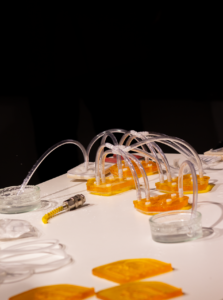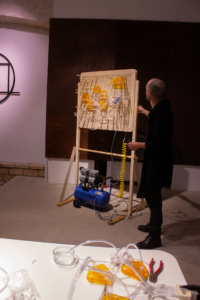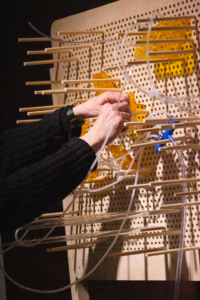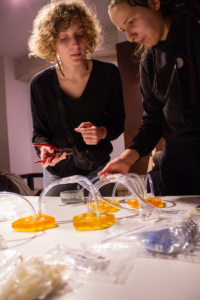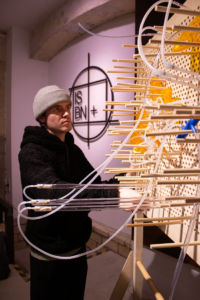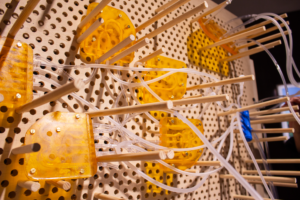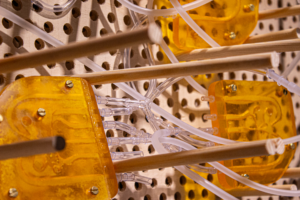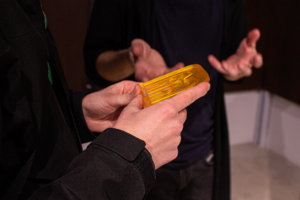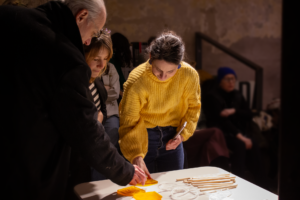February 11. 18:00 – February 13. 18:00
The information revolution that is disrupting everyday life is the latest offshoot of an eight-hundred-year-old tradition, a tradition that stretches from medieval Moorish chatbots to large language models. Both early god machines and modern neural nets are a combination of rigorous logic and religious madness: solidified ideas about thinking. Today’s most advanced forms are locked in city-sized, nuclear-powered server farms, running algorithms that modify human behaviour. But this is not the only possible version of computing: we can build a primitive digital computer out of almost anything. In labyrinth changers, in the tunnels of fluidic boards, air moves instead of electricity, performing calculations, moving the body parts of soft robots. In the 1970s, it controls automated Soviet chemical plants and space rockets. It operates an air-based memory without moving parts, using abstract shapes. The exhibition will showcase these shapes, and the workshop will allow you to build circuits that can be disassembled and assembled into components. Fluid dynamics, an experimental branch of computer science, blurs the boundaries between software and hardware, natural and artificial. When used as a model, it removes the strict dichotomy that divides human beings and their world into dead matter and abstract spirit, drawing a line between purposive design and subjective art.
Opening 11 February 2025, 18:00
pictures courtesy of the artist
